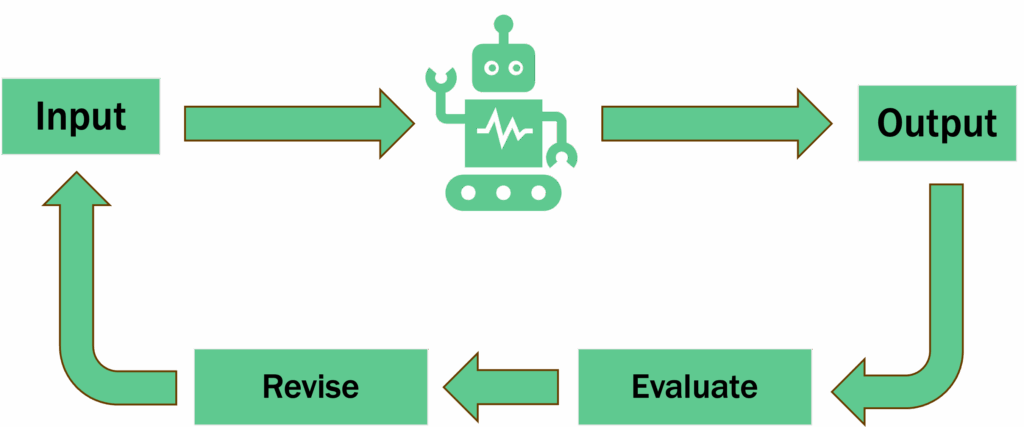AI Fluency as a Communications Superpower

The term “AI fluency” is starting to show up in job descriptions, performance goals and executive briefings. For your media and communications team, it’s more than a passing trend. It represents a shift in what it means to be effective in a role that balances speed, message discipline and strategic framing. If your team adapts, it won’t be because you automated the most. It’ll be because you know when and how to use AI without compromising trust, nuance or context.
AI fluency in comms isn’t about knowing how to write prompts in the abstract. It’s about understanding the boundaries between what can be automated and what must be reviewed. It’s about knowing where to let the machine help, and where to slow down. As more tools enter your daily workflow—from summarization engines to coverage generators to risk detectors—fluency becomes the difference between efficiency and error.

Reading, Prompting, and Reviewing AI Content
One of the most important habits your media team must adopt is treating AI output as a draft, not a final source. This means learning to review AI-generated summaries, quotes and content with the same critical eye you would apply to a first draft from an intern or junior colleague. Does the tone match your organization’s values? Is the language precise enough for external use? Has the tool invented quotes, conflated events or lost the context of the original?
Fluency means knowing how these systems work well enough to anticipate their blind spots. That includes understanding when generative tools are likely to hallucinate facts, how training data might skew interpretations and why some tools may reflect media bias that requires editorial correction. The more you and your team understand how these tools function under the hood, the better you can control the output.
Prompt writing plays a central role in this. That means writing prompts that clarify tone, define audience and establish framing. A vague prompt produces generic text. A precise one can generate a credible first draft. But knowing how to refine a prompt after reviewing flawed output is equally important. Prompting is no longer a task reserved for technical teams; it’s now part of your core media literacy.

In time-sensitive scenarios—such as crisis communications or executive briefings—being able to produce a usable AI draft can be helpful. But knowing how to do so without introducing reputational risk is the real mark of fluency. You should approach AI with the same critical judgment you apply to all communications tasks, integrating the tools without surrendering control.
Setting Boundaries and Establishing Standards
AI fluency also includes understanding what should never be automated. Statements of record, attributions to executives, and crisis responses must always go through formal editorial review. No matter how convincing an AI draft may be, it cannot understand legal implications or political context. You must set and enforce boundaries that preserve credibility.
This becomes even more important in environments where multiple teams use different tools. Consistency across your messages—even when generated with help—still requires centralized judgment. Otherwise, AI becomes a source of drift. Your teams begin to say almost the same thing, in slightly different ways, which ultimately weakens the brand.
Knowing when not to use AI is just as important as knowing how to use it. The maturity to say, “This should be written, not generated,” is part of the discipline of the role. Your most effective outcomes will come from drawing that line clearly—and teaching others to recognize it.
The Infrastructure Behind Good Judgment
Effective use of AI in communications doesn’t start with the tool. It starts with the information architecture that supports it. That is where Broadsight plays a critical role. The platform provides structured access to your past messaging, media engagement history, journalist behavior and issue-specific context. With that infrastructure in place, your team can evaluate AI-generated content with clarity and confidence.
Instead of asking a tool to summarize recent media coverage in the abstract, a Broadsight-enabled team can export specific journalist exchanges, highlight tone or sentiment shifts by topic, and ground each prompt in verified history. This avoids speculation. The AI becomes more accurate because it is anchored in truth.
That is what fluency looks like in practice: tools that are grounded, teams that are informed and systems that are aligned. The goal is not to create faster content for its own sake. The goal is to preserve strategy, accuracy and consistency, even as content velocity increases.
The ability to use AI well will not be a niche competency. It will become a foundational skill. Just as your media team once had to become fluent in search, social and analytics, you will now be expected to understand and shape the output of intelligent systems. You’ll succeed when you pair smart tools with clear judgment—and treat fluency not as novelty, but as discipline.
AI tools perform better when they have relevant source material to work from. To learn how Broadsight stores and structures the data that will inform your AI tools, request a demo today.
Receive our newsletter
Sign up below and we’ll be in touch with monthly updates about Broadsight, along with news and insights to keep you on the cutting edge of communications work in an AI era.

